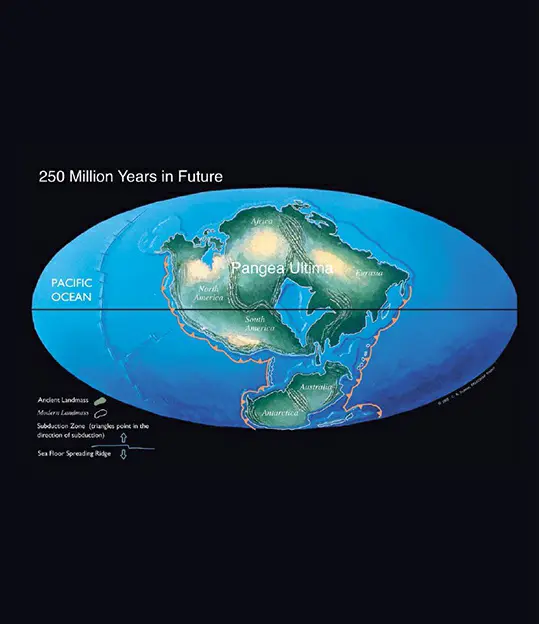The concept of Pangea Proxima takes us into the realms of geological forecasting, envisioning the future of Earth’s landmasses. About 200 million years ago, the supercontinent Pangea began to fragment, leading to the distribution of continents as we know them today. However, the perpetual motion of Earth’s tectonic plates suggests that this configuration is but a temporary state in a dynamic, ever-changing planet.
Geologists utilize current plate velocity data and computer models to predict future continental positions. Notably, the ongoing convergence of the African and Eurasian plates is raising the Alps and constricting the Mediterranean basin, foretelling the emergence of a new, Himalaya-like mountain range in this region.
Future models speculate that several geological events, including the collision of Africa and Eurasia, intensified Pacific seafloor spreading, and the subduction of the Atlantic seafloor beneath the Americas, will ultimately reconvene the major continents. This potential future supercontinent, termed Pangea Proxima, is projected to form approximately 250 million years from now. However, these predictions are speculative, acknowledging the potential for unforeseen changes in mantle convection cells that could alter plate motions.
The concept of supercontinent cycles—where continents coalesce into a supercontinent, then break apart and reassemble—has been a recurring theme in Earth’s 4-billion-year history. Evidence from magnetic orientation data and geological similarities among now-distant lands supports the hypothesis of numerous supercontinents predating Pangea.
This geological narrative of assembling and disassembling continents resembles a planetary-scale jigsaw puzzle, offering a fascinating glimpse into Earth’s deep past and its potential future.

